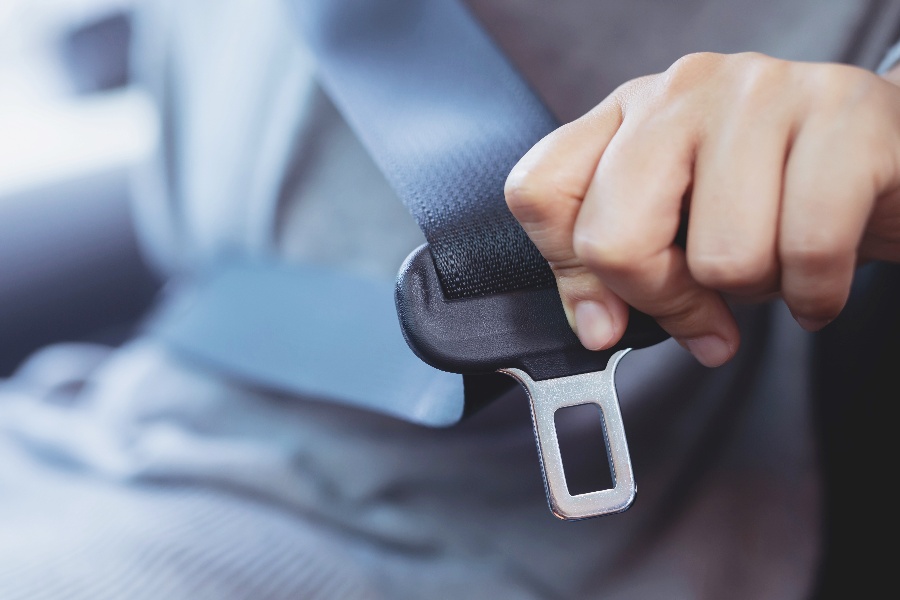
Seat belt laws are often confused with seat belt usage statistics, but the two are different. Seat belts provide safety for both drivers and passengers, so it is important to understand the seat belt data from their perspective as well.
Reporting seat belt data is essential for overall fleet safety
Seat belt data reporting is essential for overall fleet safety. It's a top priority for fleet managers, who are concerned with the safety of their employees, customers and communities. Safety is also important to environmental stewardship and community relations. Finally, companies will benefit from knowing how many people are using seatbelts in order to evaluate policies that could prevent injuries or save money on medical costs.
When you think about it this way: Safety doesn't just benefit your company or its employees; it benefits everyone—from those who work there to everyone else around them!
How effective is a seat belt?
Seat belts are effective in preventing injury and death in the event of an accident. In fact, Wearing a seat belt can reduce fatalities among front-seat passengers by up to 50% and among rear-seat car passengers by up to 75%, according to Organization for Economic Cooperation and Development (OECD)
However, some people may not wear their seat belt when they drive because they feel unsafe wearing them or don't think it will help them if they're in an accident (for example, because it's not easy to use). This can lead to serious injuries or fatalities — especially when drivers who do not wear their seat belts are involved in crashes with unbelted drivers or passengers.
What percentage of the people wear seat belts in United States?
The answer is not one size fits all. The seat belt usage rate varies by state, with most states having a usage rate of 90.4% or higher, according to National Highway Traffic Safety Administration (NHTSA) 2021 statistics. This means that more than 90% of drivers and passengers in those states use their seat belts when they drive or ride in vehicles. However, some states have lower rates: Mississippi has the lowest at 85%, while Texas is close behind at 87%.
On the other hand, California and New York have some of the highest usage rates among all 50 states, with 98% and 99%, respectively.
What are the legal consequences of not wearing a seat belt in the United States?
The consequences of not wearing a seat belt in the United States can be severe. If you are convicted of driving without a seat belt, it may result in:
-
A fine (up to $25)
-
A ticket (for up to $100)
-
Court appearance and possibly jail time if you have previous convictions for driving without a seat belt or speeding (up to 6 months).
Why reporting seat belt data matters
Seat belt data is important for overall fleet safety. When you report seat belt data, it's used to identify risk factors and trends that can help improve overall fleet safety.
-
Risk factor identification: Data on the use of seat belts in crashes helps identify areas where accidents are more likely to happen, which allows us to focus our efforts on those areas so we can make them safer for everyone involved. For example, if there's an increase in rear-end crashes after three years without any prior data available, this might be an indicator that rear-end collisions are contributing to an increase in injury severity—and thus should be addressed by industry leaders who want their fleets' performance to remain high!
-
Trend identification: Knowing what happened before can help inform how things will progress over time as well. For example, if there was no change between two years but then suddenly saw a huge spike in rollover rates between years three and four (or five), then perhaps something shifted somewhere else within fleets themselves which caused this trend change?
Obtaining seat belt data
The most common way to collect seat belt data is through a mobile app. A few examples of apps include Crashlytics and Seatools.
Another option is using a vehicle tracking system, which can be purchased as part of an onboard diagnostics (OBD) kit or built into existing vehicle systems. One example is VBOX Pro by Pulsus Engineering Ltd., which uses Bluetooth Low Energy (BLE) technology and includes an optional smartphone app for logging driver compliance with seat belt laws in real-time (see Figure 1).
Detecting and verifying seat belt data
If you want to verify the information in your seat belt data, there are several ways you can do so. The most common is by using a seat belt sensor or video camera that detects when a person is buckled up and records their behavior. This method does not require any additional equipment, but it does have some limitations:
-
The sensor could malfunction if it's exposed to water or other contaminants. A better option is having an infrared LED light installed above the steering wheel level (or below it), which will illuminate whenever someone unbuckles their seatbelt before getting in or out of the vehicle. An IR thermometer could also be used as part of this system; this would allow for more accurate readings because it doesn't rely on ambient light conditions like cameras do.*
How do you implement seat belt policies in your fleet?
Implementing seat belt policies in your fleet is easy, but it can get complicated if you don't have a firm grasp on what to do.
-
Educate drivers on the importance of seat belts. This can be done through presentations or posters in the office and on vehicles, as well as periodic reminders about wearing them when parked or stopped at lights or stop signs.
-
Install seat belt buckles for all new employees who are driving vehicles in your fleet (or those returning). These devices enable you to quickly remind everyone that there's no excuse not to be buckled up; they're also easy for newbies like yourself who may not know how they work yet!
Conclusion
Seat belt data is an important component of fleet safety, and it's important that everyone understands the value of reporting this type of data. If you are looking for ways to increase your fleet's safety while reducing your costs, then seat belt reporting can help make those goals a reality. contact us to get started today.








